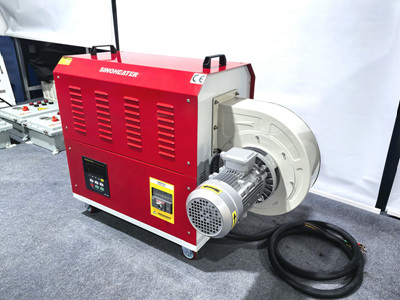Choosing a Heat Blower: How to Assess Temperature Display Accuracy for Reliable Performance
Accurate temperature display is critical when selecting a heat blower, as it directly impacts safety, efficiency, and user control. Inconsistent or misleading readings can lead to overheating, energy waste, or inadequate heating. Below are key factors to evaluate when determining the reliability of a heat blower’s temperature monitoring system.
Sensor Type and Placement
The accuracy of temperature readings hinges on the quality and positioning of the internal sensor. Thermocouples and RTDs (Resistance Temperature Detectors) are common sensors known for their precision and responsiveness. Ensure the sensor is placed in a location that reflects the true output temperature, such as near the heating element or airflow exit point. Poor placement—such as near the device’s exterior or in areas affected by ambient heat—can result in skewed readings that do not represent the actual air temperature.
Calibration and Factory Testing Protocols
A heat blower’s temperature display should undergo rigorous calibration during manufacturing. Look for models that specify adherence to international standards, such as ISO or NIST guidelines, which ensure consistent accuracy across operating conditions. Some manufacturers include documentation of calibration tests or offer on-site recalibration services, which can be valuable for maintaining precision over time. Devices lacking transparency about calibration processes may be prone to drift or inaccuracies as components age.
Response Time and Real-Time Adjustments
In dynamic environments, the heat blower’s display must update quickly to reflect changes in temperature. Slow response times can lead to overshooting or undershooting target settings, especially in applications requiring tight thermal control. Test how the display reacts to sudden adjustments in power or airflow—a high-quality system will show immediate feedback, allowing users to fine-tune settings without delays. This feature is particularly important for industries like manufacturing or laboratory work, where precise temperature management is non-negotiable.
Digital vs. Analog Display Reliability
Digital displays are generally preferred for their clarity and precision, as they eliminate the ambiguity associated with analog dials. However, the reliability of a digital interface depends on its resolution and the quality of its LCD or LED components. Ensure the display is backlit and readable in low-light conditions, as poor visibility can lead to misinterpretation of readings. Some advanced models include color-coded indicators or alarms to alert users when temperatures deviate from set ranges, adding an extra layer of safety.
Environmental Resistance and Durability
Harsh operating conditions, such as dust, moisture, or extreme temperatures, can affect a display’s functionality. Opt for heat blowers with IP-rated enclosures or sealed displays that resist contamination and corrosion. Additionally, verify that the display remains legible even when exposed to vibrations or physical impacts, which are common in industrial settings. A durable display ensures long-term accuracy without requiring frequent repairs or replacements.
Integration with External Monitoring Systems
For complex applications, the ability to connect the heat blower’s temperature display to external controllers or data loggers is essential. Look for models with compatible output ports, such as USB or RS-485, that allow real-time data transmission. This feature enables remote monitoring, automated adjustments, and historical trend analysis, which are invaluable for optimizing processes and identifying potential issues before they escalate.
By prioritizing these aspects, buyers can select a heat blower with a temperature display that delivers consistent, actionable data. Accurate monitoring enhances safety, reduces energy consumption, and ensures the device meets the specific demands of its intended application.



